SEO & website builders – everything you need to know
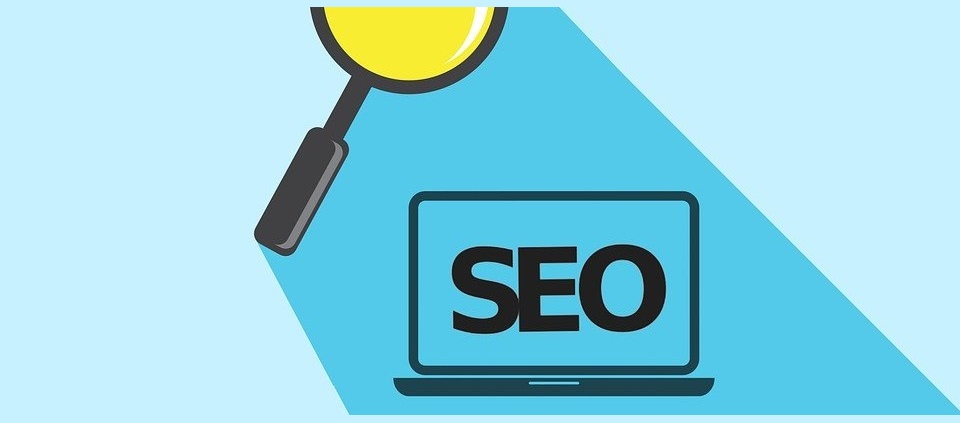
Some people embrace it, whereas others try and avoid it. However, if you’re serious about developing an online presence and you want to develop an effective long term strategy for your online business, you’re going to have to think about Search Engine Optimization (SEO).
If you’re choosing to use one of the best website builders, like Wix, Squarespace, or Shopify to create a website, the good news is that all of the technical SEO has been done for you and is already built into the platform and templates. So, you won’t need to do any coding and instead can focus on keyword research, on-page SEO, and off-page SEO.
In this article, we outline how to be effective with SEO when using a website builder platform. We will take you through some things that you can do on all DIY website builders and things you can do outside of the platform to boost your rankings. If you want to find out which is the best website builder for SEO head over to our home page and check out our expert reviews. We conduct our own SEO audit on every platform we write about so you know how well your website can perform. Follow the link here to see our Wix SEO analysis.
Keyword Research

Keyword research is the process of finding out actual search terms that people across the internet type into search engines.
It should be the first step in any SEO strategy and will allow you to create relevant, useful, and engaging content based on what your target audience is actually looking for.
The data you get back from keyword research will vary slightly, depending on which tool you use, but the most common criteria you want to look out for is the average monthly search volume and the keyword competition index.
Average monthly search volume tells you how popular a keyword is and the competition index will tell you how hard it will be to rank for a particular keyword.
When you start looking into keywords for your topic you will notice that short-tail keywords (general search phrases with only one or two words) have a very high average search volume and are very competitive.
Whereas long-tail keywords (specific search phrases with three or more words) tend to have a lower average search volume and can be less competitive when compared to the short-tail keywords.
A good keyword strategy will target both short and long-tail keywords.
The Best Keyword Research Tools
Once you have an idea of the keywords you would like to focus on you can use a keyword research tool to help you find out what people are actually searching for and the data behind these search terms.
Deciding on the best keyword research tool will depend on your budget and how much data you need, but here are some to take a look at.
- Google Adwords Keyword Planner
- Yoast Suggest
- Google trends
- Moz
- SEMrush
- Ahrefs
- Ubersuggest
On-page SEO
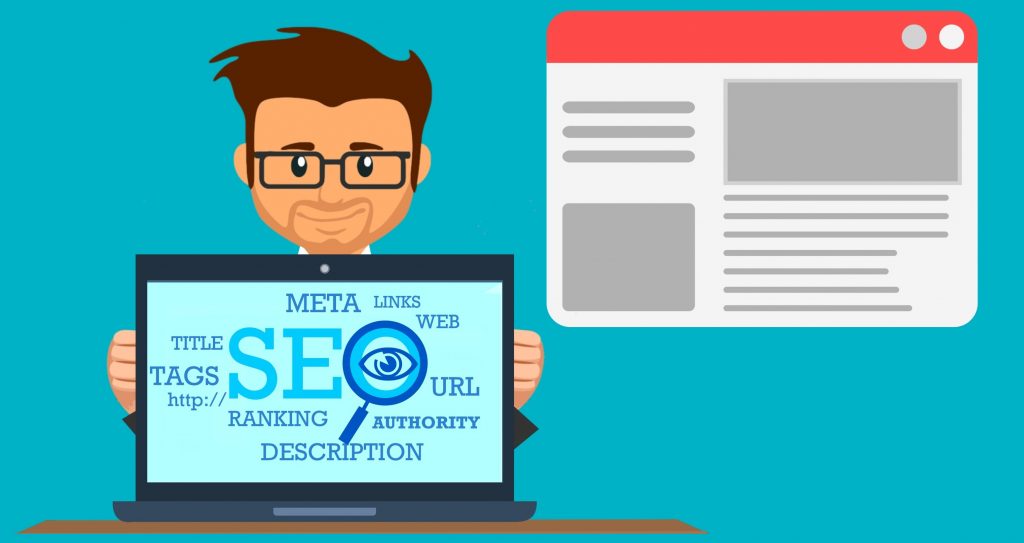
When using a website builder platform all of the technical SEO has been taken care of so you will spend most of your time concentrating on On-page optimization.
When done correctly On-page SEO will help search engines to understand your website and its content, helping it to decide whether or not it’s relevant for user search queries.
Website builders make On-page SEO easier by giving you things like drop-down menus within the text editor to create header tags and options pages with boxes to write meta-descriptions and URL tags so you can do everything without having to go into the HTML scripts.
We’ve listed below the easiest and most important things you should focus on when it comes to SEO for website builders.
1. Header Tags (H1-H6)
Header tags are HTML tags used to identify between headings and subheadings and provide context around what the subject matter of the rest of the content on the page is about.
H1 tags should be used for the main heading of the page and then H2-H6 tags should be used to organize the page to make the content easy to navigate and read.
Proper use of header tags has both benefits to search engines and users. Search engines will be able to understand and index well-structured sites much quicker.
For users, clear headings will make a website much easier to navigate because they will be able to find the content they need much faster and it will make the content easier to digest because they know what’s coming.
Pro-tip: If it makes sense to do so, include your target keyword in H1 headers.
2. Rich Content (Videos & Images)
When you think about SEO, you naturally think about optimizing text, however, having videos and images as part of your content plan, has a big impact on your site’s SEO performance.
Data from BrightCove tells us that if you include video content on your website you can expect to see an average increase of 157% more organic traffic arriving from search-engine ranking pages.
Including high-quality images has also been shown to reduce bounce rate and keep users on your pages for longer. Google values rich content because they know people like consuming it more than text content.
Most website builders make it simple to include videos and images. You simply add in a video or image content block, paste a video URL or upload an image, and it’s done.
We’ll talk some more about how to optimize your images for SEO later in the article.
Pro-tip: Give your images and videos some context, embed them in a place where it makes sense with other relevant written and visual content.
3. Internal / External Links
Using relevant internal and external links throughout your content will improve your website’s overall SEO performance, helping it to rank higher and increase its visibility.
Internal links – are hyperlinks that take the reader to another page on your website.
External links – are hyperlinks that take the reader to a relevant page on another website.
When done correctly internal and external links will increase the authority of your site which is a direct ranking factor.
Benefits of internal links
Internal links can increase the time a reader will spend on your website, making them much more likely to become a customer or a follower.
They are best used as call-to-actions or to give the reader more information about a certain topic.
For example, if I was writing an article about SEO on Shopify for this website, I would include an internal link to our review of the Shopify platform so the reader can find out more information and hopefully stick around for a bit longer.
Internal links also provide your site with a structure that makes it easier for the search bots to navigate through relevant content.
Benefits of external links
Including outbound links that send people away from your site may seem counterintuitive, however, it can improve the authority of your site by providing your readers with valuable references that benefit their overall experience.
The main thing to think about when using external links is to make sure you’re only linking to trustworthy and credible sites with high domain authority.
Avoid spammy and poorly managed sites at all costs as external links to these sites will damage your SEO.
An example of a good external link when writing about SEO would be to link to a page on Moz.com, Yoast.com, or Ahrefs.com as they are industry thought leaders that will have great domain authority.
Make a list of the thought leaders and most respected sites within your industry and use them for your outbound links when necessary.
Pro-Tip: Anchor text is the text that is linked to another page, often highlighted in blue and underlined. Make sure this anchor text is relevant to the link and use phrases that describe what the link is about. This helps the reader and search engines understand the context around the link, improving user experience, and SEO performance.
4. Titles & Descriptions
Title tags and meta descriptions are bits of HTML code in the header of a webpage.
They are displayed on search engine results pages (SERPs) as the clickable link that takes you through to a website (title) and the description underneath the link that gives readers information about the webpage (meta description).
It’s the only thing that will distinguish you from other competitor websites on the SERPs and therefore it has a huge impact on your click-through rate.

Similar to heading tags, title tags and meta descriptions give search engines and readers context about the web page.
How to write a good title tag
Try to write title tags between 50-60 characters as this is what will actually show up on the search engine pages.
Also, make sure to include relevant keywords and phrases to let search engines and readers know what the page is about.
Good context is the key to success.
If your title is going to be longer than 60 characters make sure that any keywords and phrases that are important are closer to the front of the sentence to make sure they show up on the search engine results pages.
The main thing to remember is that title tags give you the opportunity to gain click-throughs to your site, so make it compelling and right for your audience.
How to write great meta descriptions
Meta descriptions give you a bit more space to describe what’s on your page but are still very limited.
What will show up on the SERPs will be around 155-160 characters, which works out as roughly one or two sentences.
Again, the main purpose here is to attract people to your site, so the descriptions need to be captivating and relevant to your audience and the topic featured on your web page.
Use keywords and a call-to-action to give the reader context and a clear instruction of what you want from them.
Pro-tip: Create unique titles and descriptions for every page on your website to drive click-through rates, to help search engines understand that your content is valuable, and to signal that there is no duplicate content on your site.
5. Friendly URLs
URLs are another factor in helping readers and search engines understand what your webpage is all about.
When you first sign up to a website builder, before you purchase your custom domain name you’ll notice that your URLs will look something like this:
https://www.website.com/app/website/users/132022142/sites/506795768773583108/dashboard/editor#/page/0e9231d0-8ae7-11ea-b63d-e384bc90fc08/block/0e9b7340-8ae7-11ea-a1f0-7d1f6a6bd992
As you can see this isn’t helping anyone figure out what this webpage is about.
Luckily most website builders make it simple for you to edit URLs with a settings page that will look something like this one from Squarespace:
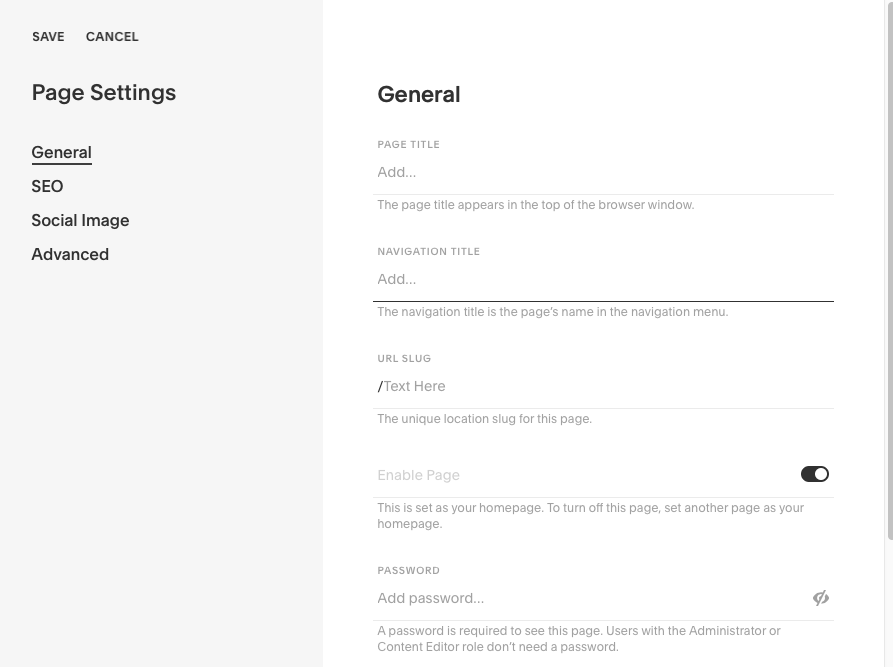
How to write SEO friendly URLs
Best practices for writing URLs that will benefit your overall SEO strategy will involve including a keyword and keeping them short.
URL keywords
Ideally, you will include your target keyword in your URL because this will be the most relevant to what you are writing about and will also signal to search engines, “Hey! This piece is about […]”
Keep it short and sweet
Long URLs make it harder for search engines and readers to quickly distinguish what the page is about.
Lots of studies have found a strong correlation between short URLs and higher-ranking pages, so the shorter the better.
Here’s an example using one of our own URLs:
https://websitebuilderninja.com/e-commerce-builders
As you can see our URL is short and includes our target keyword, e-commerce builders.
There’s no second-guessing what the page could be about, it’s simply about e-commerce website builders.
Pro-tip: Use hyphens in between words because these let Google and other search engines know that you want the words in your URL to be viewed independently and not as one big jumble of letters.
6. Effective Keyword Writing
So we now know that you should include your focus keywords in your title tags, meta descriptions, header tags, and in your URLs to make it easy for search engines and readers to understand the context of your web pages, but what about the rest of the content?
To be completely honest, if you’ve included your keywords in those four areas you’ve done most of the hard work.
When you’re writing the rest of your content you should focus on writing naturally and in a conversational tone.
Using natural language is important to rank well because search engines will actually penalize or potentially ban pages that attempt to stuff keywords into a piece of content.
If you write how you would normally and genuinely attempt to educate and inspire the reader, your focus keywords will naturally flow throughout your content and create a relevant piece of text, both in the eyes of the reader and the search engine bots.
7. Optimize Images
We’ve already discussed the importance of using rich content like images to make your content more compelling for your reader.
Once you’ve decided on the right image, the next step is to optimize it for your website and to improve your overall SEO and user experience.
Here are a few things that you should consider…
Filename
Make sure your filename clearly states what your image is about and use a keyword where possible.
Choose the right file type
There are many file types to choose from and you might want to choose different file types depending on the type of image you want to use.
However, JPEGs, PNGs, and SVGs are some of the most common and preferred options.
JPEGs – are great for larger photos and illustrations. You’ll be able to maintain decent color and clarity with a relatively small file size.
PNGs – will produce better quality images but they come with a larger file size which will slow your loading time down. Only use when you need to preserve background transparency.
SVGs – are lightweight options for vector files such as logos, icons, and illustrations. A great benefit is that they can be resized without loss of quality.
Reduce file size
Page speed is a direct ranking factor so having pages that load as fast as possible is vital for good SEO.
On average images make up around 21% of a webpages ‘weight’ so reducing the file size is a simple way to speed up your site.
The simplest way to do this is to use a tool like Tinyjpg.com that will reduce your image file size for you.
If you want to see how much of an impact this has on your site, try testing your page speed using Google’s page speed insight tool before and after you upload the compressed images.
Captions
Captions should only be used when it adds value to the reader’s experience.
Simply give a bit of context to the photo so that if people are scanning your content they can quickly understand why the image is there and what it’s about.
If it’s appropriate you can include a keyword but be careful not to fall victim to keyword stuffing…
Image alt text
Finally, writing something for your image alt text is something that you should do for every image you put up onto your site.
Image alt text provides content for visually impaired readers that might be using a screen-reader and for those people who have images turned off on their web browser.
Again this is another opportunity to include the focus keyword if it’s appropriate.
Off-page SEO
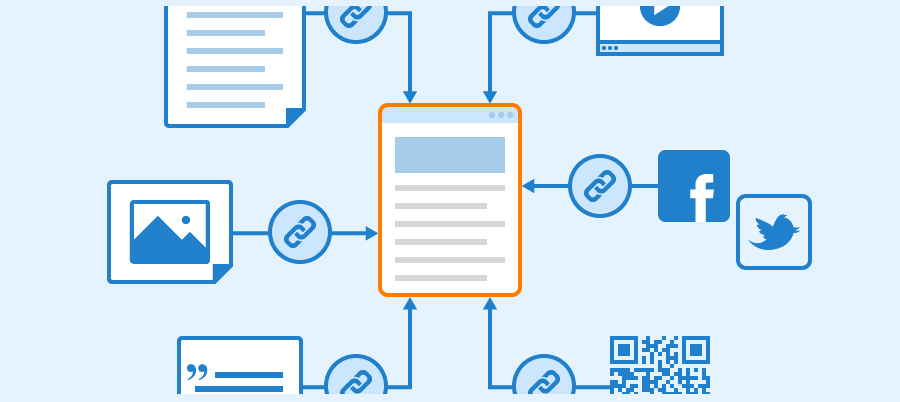
You might have already guessed it but Off-Page SEO is everything that happens outside of your website that improves your SEO ranking.
It’s basically about generating traffic to your site and making your business look legitimate and successful.
While social media helps to some extent by proving to search engines that people engage with your brand, the main thing that will improve your Off-page SEO is backlinks.
What is a backlink?
A backlink is simply an inbound hyperlink from another website to your webpage.
Quality links from a good source can bring lots of traffic to your site.
Search engines use the number of backlinks a website or a piece of content has to determine how valuable a piece of content is.
The theory is if lots of people are using a particular page as a resource and are prepared to link to it from their site, it must be really useful and relevant to that given topic.
Sites with lots of backlinks tend to have a higher domain authority and sites with high domain authority on average rank well on search engine ranking pages (SERPs).
How to build links to your website?
There are a few black-hat or grey-hat online marketing techniques where you can exchange your hard-earned cash for backlinks, but this is not a good long-term strategy and can actually harm your SEO if the links are from spammy websites.
The best strategy is to write amazing content that people will naturally want to link to.
If you’re writing content that educates and informs the reader on a certain subject, in an entertaining way, you are much more likely to receive backlinks from other sites that have found it to be valuable and think that their audience would enjoy reading it too.
If you have a product, sending it out to websites that write about similar products or the industry you’re in can be a good way to build backlinks to your site.
Most people will be happy to write about and link to your website if they’re getting free stuff!
Final thoughts on how to be effective with SEO when using website builders
Website builders are great because they take care of the technical SEO for you. However, there is still lots to do before you reach the number 1 spot on the search engine ranking pages.
It all starts with keyword research so you can focus on the search terms that you want to rank for. Make sure that the ones you choose are relevant to your audience and that you are targeting both short-tail and long-tail keywords.
From there, following our On-page optimization steps will make sure that all the content you produce for your website is as search-engine-friendly as possible, so you can start climbing the rankings.
Finally, once the On-page optimization is taken care of and you have some quality content up on your site you should start building backlinks to your website to boost domain authority and referral traffic.
Written By
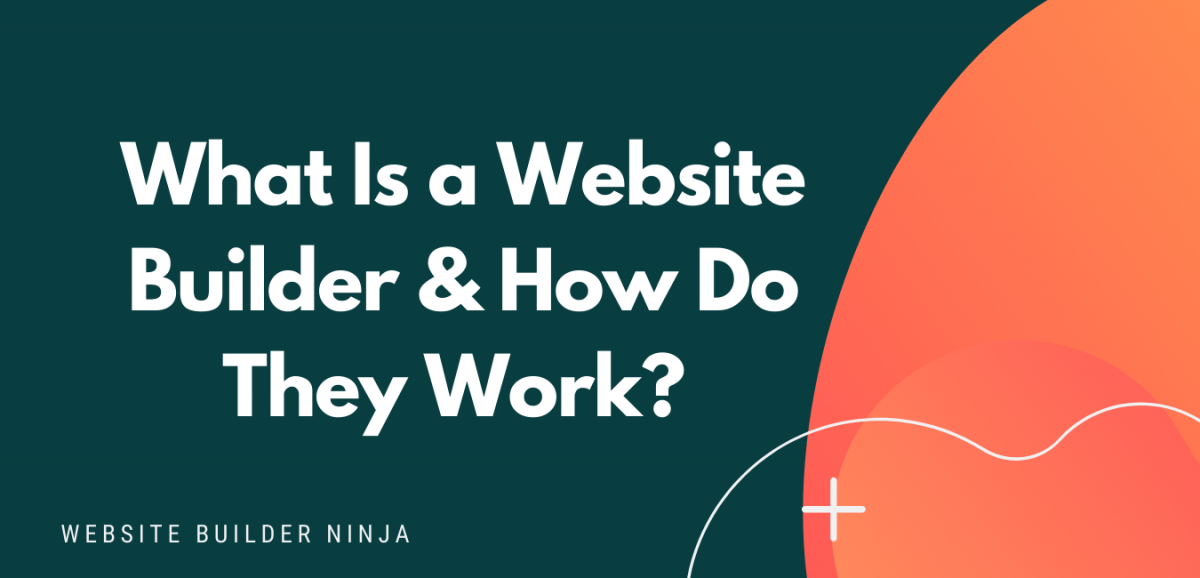
What is a website builder?
The simplest answer to the question of what is a website builder is that it’s a software programme that helps you to build a website without having to manually code anything. But, how do they work?
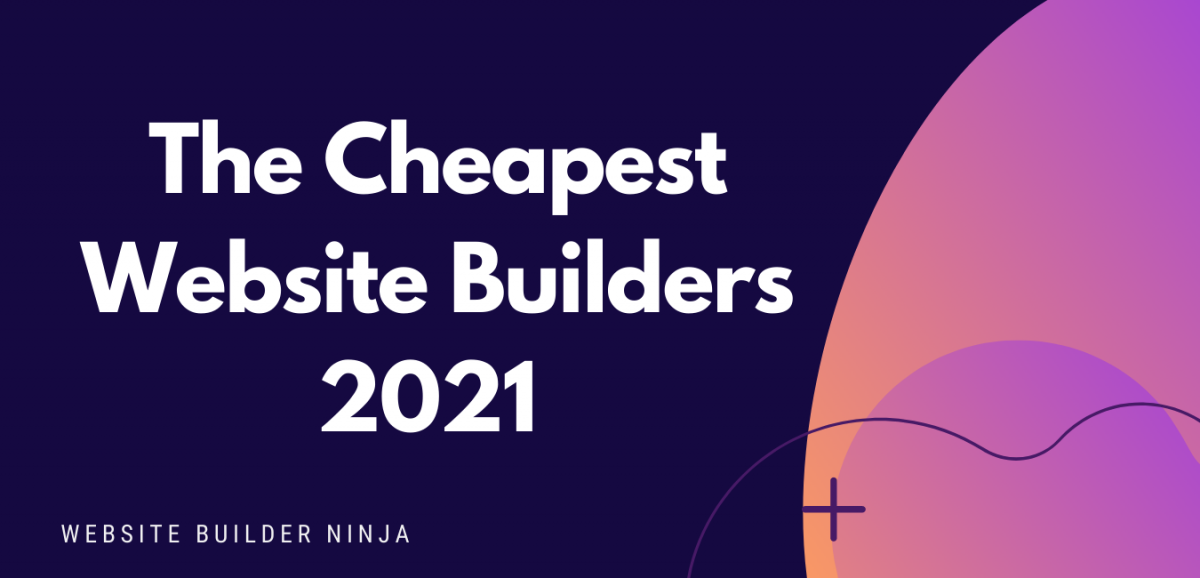
Cheapest Website Builder 2021
Building a website doesn’t have to cost the earth. We’ve pulled together a list of the cheapest website builders and ecommerce platforms to help you find an affordable option for your website. Not only are they the cheapest, but some of them are the best of the best…
